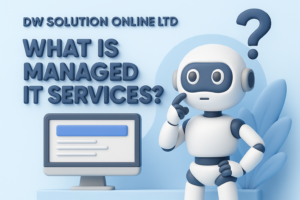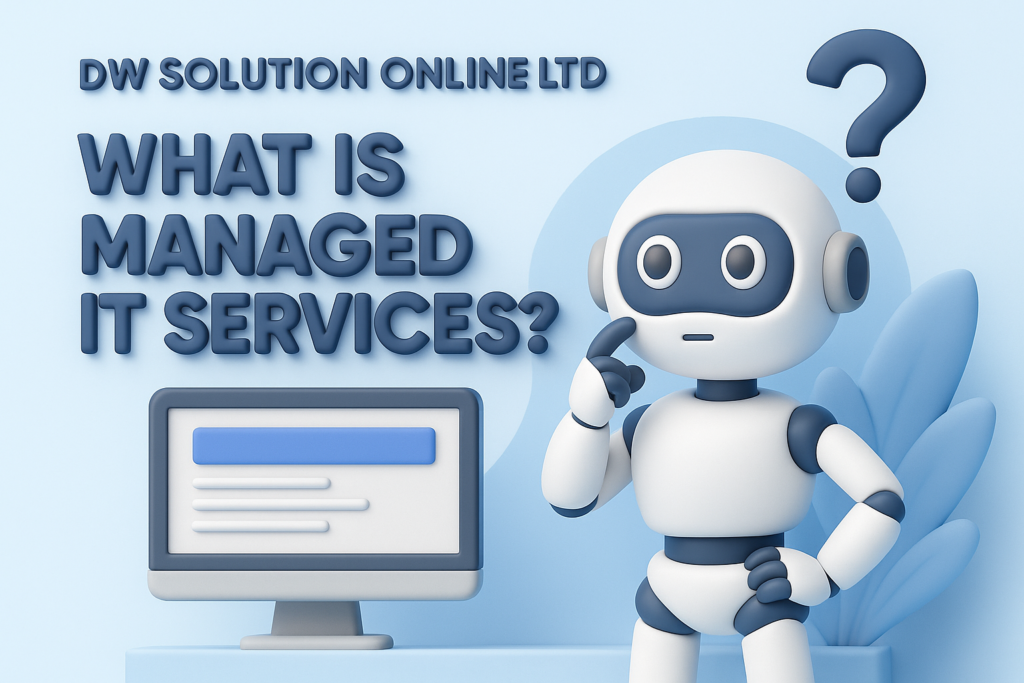Managed IT services
Managed IT services are those services where an IT service provider undertakes essential IT tasks to a third party service provider also called the Managed Service Provider (MSP). Some of the duties taken up by these providers are management of digital help desks, network monitoring, installation and update of software, and business continuity planning.
As a small to mid-sized businesses (SMB), managed IT services provide an affordable method of utilizing enterprise technology and knowledge that would otherwise not be an option due to the conventional expense of maintaining them in-house.
What is Managed IT Services?
MSPs offer a continuous, proactive IT support that covers the installation, configuration, monitoring, and maintenance of an IT infrastructure of a firm. As compared to the conventional break/fix model, contemporary MSPs predict the possible threats and streamline systems to optimize them in terms of performance and safety. Services are generally sold on a fixed, regularly recaptured price, and may have a levelled system specified in a Service Level Agreement (SLA). Clients will be able to use service packages according to their requirements at the given moment, scaled according to their variable needs.
The Pros of Using an External IT Support Team Vs. The Internal IT Team
Managed IT services are complemented and not substitutes to internal IT departments. MSPs take care of day-to-day IT activities, and thus release internal IT experts to work on heavy assignments. Co-managed environments involve MSPs and internal groups finding ways to boost efficiency and quality services. It enhances productivity besides enabling companies to implement massive IT strategies with ease.
Evolution of Managed IT services
In the early days IT services were based on a reactive break/fix model. This approach became inefficient as the IT assets increased in count. The concept of Managed IT services came into existence in early 2000s but provided a solution that was proactive, scalable and allowed the business to maintain the system, upgrade, and correct the problem before they could cause bedlam. This has become the norm in the industry, because it is efficient and produces customer satisfaction.
Important Classifications of Managed Information Technology
Cybersecurity: MSPs offer update, anti-virus software, compliance, MFA, user training, and risk analysis. Certain MSPs associate with themselves with MSSP to offer high-end security.
Cloud Services: MSPs can help to move away on-premises infrastructure to the cloud. They offer services, including cloud Remote Monitoring and Management (RMM) services and cloud security.
Remote Monitoring and Management (RMM):
Switches, firewalls and the routers support on the network
Patch deployment
Troubleshooting and automation of IT
Asset inventory and endpoint management IT
Business Continuity and Disaster Recovery (BCDR): MSPs assist companies to become disaster-ready by managing their backups, carrying out regular tests, and data recovery processes and procedures to safeguard company data integrity and compliance.
Advantages of Managed IT Services
Lower IT expenses: This aspect helps in the accurate budgeting of businesses by offering scalable services within predictable expenses.
Availability of Expertise: MSPs can provide highly knowledgeable professionals in cybersecurity and compliance as well as IT strategy to clients.
Filling Talent Gaps: MSPs assist to overcome the challenge of skilled IT professional shortages that exist by preventing talent gaps.
Consistent Service: SLAs make the whole process transparent and causal, whereas MSPs provide better performances when compared to the other service providers with sound resources.
Operational Efficiency: The outsourcing of regular IT duties allow the internal team to concentrate in main business operations.
Managed IT Service Pricing Models

MSPs Best Practices
Inclusive Documentation: Maintain an accurate documentation of work processes, client structures and services.
Client-Centered Planning: where the goal is to reduce interruptions, match the services with the goals of the client.
Integrated Management Frameworks: Apply uniform management frameworks such as ITSM models adopted throughout the operation, such as ITIL to realize sustainability and scalability.
Talent acquisition: Create high quality internal teams or strategically outsource to bring in quality service.
Cloud Service Focus: Provide strong cloud services due to the growing pressure of clients.
MSP Tools and Technology
Current MSPs utilize emerging technologies like artificial intelligence-based security and Robotic Process Automation (RPA) in offering efficient scalable services. Combined cybersecurity, RMM, and other solutions screened by platforms such as ConnectWise facilitate the work of MSPs and help serve more clients, with greater efficiency.
The concept of managed IT services is developing, providing scalable, proactive and secure solutions that can enable any business to compete in the digital world successfully. MSPs are proven to be a very useful asset in a contemporary organization whether as an extension of an internal team or as a complete IT department.
If you want reliable, affordable, and professional managed IT services, try DW Solution Online LTD — a trusted name in IT management and digital transformation.
Contact US
PH# +92 300 9569385
admin@dwsolutionline.com




